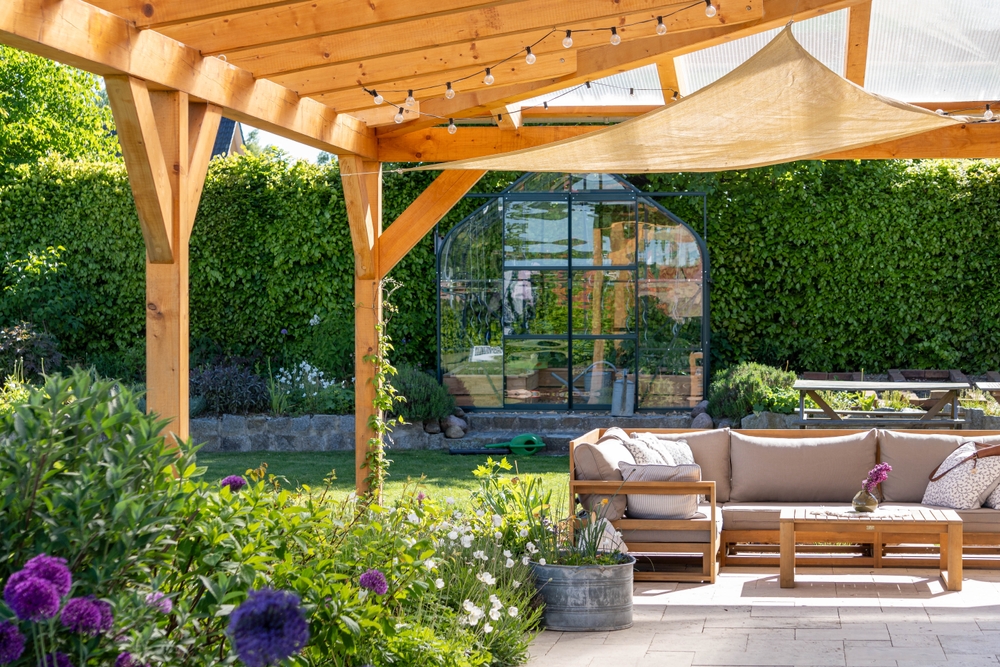Balancing hardscaping and softscaping: a practical approach
Practical guidance for balancing hardscaping and softscaping in residential yards, emphasizing durable patio design, plant health, efficient irrigation, and sustainable practices. Learn how to coordinate landscaping elements, use DIY and upcycling approaches, and maintain soil health and seasonal care for cohesive outdoor living spaces.

Creating a balanced outdoor space means more than installing attractive paving or choosing colorful plants; it requires a practical plan that links hardscaping and softscaping to site conditions, maintenance capacity, and sustainability goals. Effective coordination of patio design, planting schemes, irrigation, mulching, and composting produces outdoor living areas that are functional, resilient, and visually coherent. The guidance below covers material choices, plant selection including indoor plants for transitional spaces, vertical planting options, soil health practices, and DIY decorating ideas that support long-term landscape performance.
Hardscaping and patio design
Hardscaping provides structure: patios, paths, retaining walls, and built seating define how you use outdoor spaces. When planning patio design, evaluate material performance, permeability, and scale relative to your home and yard. Permeable pavers or crushed stone help manage runoff, while natural stone and textured concrete provide durable surfaces. Position hardscape elements to create logical circulation and to reduce soil compaction in planting zones. Integrating planting beds alongside paved areas softens edges and creates visual continuity between built and planted elements.
Hardscape details affect microclimates and maintenance. Proper grading and drainage prevent standing water that can damage paving or stress plants, and appropriate edge details reduce leaf and debris build-up. Consider sightlines from interior spaces so outdoor living areas extend the home visually. Durable materials that age gracefully and are easy to maintain reduce long-term costs and make seasonal care more predictable.
Softscaping and plant choices
Softscaping adds seasonal interest, biodiversity, and texture. Choose plant species suited to local light, soil, and climate to minimize irrigation and upkeep. Group plants by water needs to simplify irrigation and increase survival rates. Indoor plants can be used in covered outdoor rooms or transition zones to blur the line between inside and out, while container plantings allow flexibility for seasonal display.
Vertical planting—trellises, living walls, and tall containers—expands green space when horizontal area is limited and improves privacy or shade near patios. Select varieties that match available light and support pollinators where possible. Thoughtful layering of canopy, understory, and groundcover plants creates year-round structure and reduces maintenance requirements over time.
Soil health, mulching, and composting
Strong planting depends on good soil health. Start with a soil test to identify pH and nutrient needs, then improve structure and fertility with composting and targeted amendments. Adding organic compost improves water retention and microbial activity, which supports long-term plant health.
Mulching conserves moisture, suppresses weeds, and moderates soil temperature; organic mulches gradually decompose and feed the soil. Regular composting of yard waste and kitchen scraps produces a cost-effective amendment you can apply to beds and containers, reducing the need for synthetic fertilizers and improving resilience to drought and disease.
Irrigation and seasonal care
Efficient irrigation protects both plants and hardscape elements. Drip irrigation and soaker hoses deliver water to root zones while reducing evaporation compared with overhead sprinklers. Use zones and timers to match seasonal needs, and adjust schedules during wetter or colder periods to avoid overwatering.
Seasonal care tasks—mulching, pruning, winterizing irrigation lines, and clearing debris from paved surfaces—preserve both aesthetics and function. Good drainage around patios and retaining structures prevents damage from freeze-thaw cycles and helps maintain soil health for adjacent plantings.
Sustainability, upcycling, and DIY decorating
Sustainability can guide material and plant choices. Use locally sourced stone or reclaimed materials to reduce embodied energy, and select drought-tolerant or native species to cut irrigation demands. Upcycling old timber or containers into planters, benches, or raised beds reduces waste and adds character.
DIY projects allow homeowners to phase improvements according to budget and skill: installing simple edging, building planter boxes, or adding a trellis are approachable tasks. Decorating choices—durable furniture fabrics, layered lighting, and plant arrangements—should enhance comfort without overpowering circulation or plant needs.
Integrating landscaping for outdoor living
Treat landscaping as a system where hardscaping, planting, irrigation, and maintenance schedules work together. Place trees and shade elements to improve patio comfort and reduce heat gain, and use plantings as windbreaks where needed. Coordinate plant selection and placement to support access, sightlines, and usability for outdoor living.
Regular evaluation and incremental improvements—such as adding compost to beds, installing drip irrigation, or softening edges with vertical planting—help landscapes adapt to changing conditions and preferences. With thoughtful planning and steady care, a balanced combination of hardscaping and softscaping creates outdoor spaces that are both practical and pleasant across seasons.
Balancing hardscaping and softscaping combines design, horticulture, and maintenance planning to produce usable, sustainable outdoor living areas. Prioritizing soil health, efficient irrigation, appropriate plant selection, and durable materials results in landscapes that require less intensive upkeep while providing ongoing benefits to people and wildlife.





